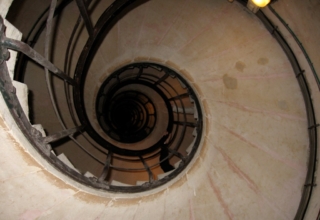
In recent years, situational-descriptive questionnaires have become more popular. The respondent is presented with a specific description of a situation and asked to indicate which of several responses is most (and least) likely. For example, a study regarding specific strategies can make use of a questionnaire that identifies a specific coaching issue (such as responding to a difficult subordinate) and then lists several different ways this issue can be addressed. The questionnaire respondents rank order and/or rate each of the alternative responses as to their frequency of use (or desirability) as a coaching strategy. Rich insights can be gained if all those involved complete the questionnaire. Respondents also can be asked to predict how they think other people will respond (coaches, clients, supervisors, organizational leaders, etc.). Used in this way, the questionnaire reveals the respondent’s expectations regarding the coaching process. The respondent is not being asked to evaluate probable responses, but only to predict what they will be.
Critical Incident Checklist
A third psychometric device is closely related to the situational-descriptive questionnaire. Through use of critical incident checklists, a respondent is asked to indicate how frequently a specific activity is generally found to be critical to a specific outcome or more broadly the success or failure of a client or organization in addressing a specific type of (messy) problem. An indication of its relative frequency of occurrence can be of considerable value in coming to a fuller understanding regarding the dynamic interplay between a specific strategy and the needs of a client or organization.
General Information
The tenth source of information resides in the memory of the information gatherer as well as in the memory of others participating in this initiative. This is the general knowledge one has acquired about the process or event being studied (and about the dynamics of systems in general). One need not direct this knowledge only to the specific process or event being studied.
This is also a source of information that might require the engagement of scholarship along with the other nine research-based sources. Information about nationwide or regional trends, new funding priorities, different models, and related perspectives and practices can be thrown into the hopper along with information about the system in which the study is taking place. The general knowledge can be used as a signal. When information-gathering methods generate data that are discrepant not only with information from other sources in the life of the individual client or organization, but also with general trends regarding this type of client or organization, they should be viewed skeptically, though not necessarily dismissed.
Conclusions
The analysis of these preliminary nested problems and messy environments can point the way to effective information-gathering strategies and provide us with an opportunity to be optimistic about the potential for evidence-based expertise. I hope that you exit this essay with a clearer sense of the challenges inherent in this multi-tasking information gathering process and with some ideas about how nested problems can be effectively addressed and messy environments can be navigated on behalf of valid and useful expertise.
In this essay I have explored the interplay between two cultures—beginning with our apparent contemporary embrace of the scientific culture (and numbers). I have then moved to a similar exploration of the second (humanities) culture, with a focus on the semantic and syntactic use of words. I have suggested ways in which these two cultures can be brought together in a cosmopolitan perspective on the world in which we live and in which members of our society serve as experts. I have written about the underlying need for a broader catchment field (regarding information) and about ways to broaden this catchment area (especially when gathering information about human-based processes and events). I reiterate what I suggested at the start of this essay: Cosmopolitan expertise residing at the middle of an intersection can be of great value in our mid-21st Century world.
__________________________
Download Article
















